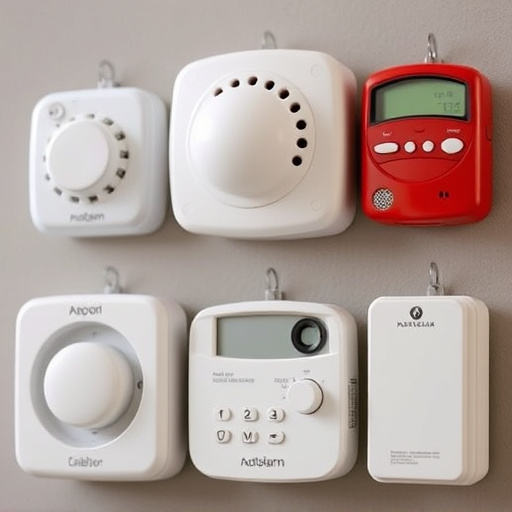Pocket-sized security alarms revolutionize senior safety with compact design, automatic fall detection, GPS tracking, and remote monitoring. Ideal for minimalists, these devices offer easy use, long battery life, water resistance, and customizable settings, fostering independent living while ensuring peace of mind for seniors and caregivers through integrated emergency response features.
“As our aging population grows, ensuring senior safety becomes a paramount concern. Wearable security alarms offer a discreet yet powerful solution, providing peace of mind for both seniors and their caregivers. This comprehensive guide explores pocket-sized devices, highlighting essential features like long battery life, easy activation, and fall detection. We delve into how these innovative wearables function hands-free, ensuring immediate assistance during emergencies. By understanding the benefits and choosing the right fit, seniors can maintain independence while staying protected.”
- Pocket-Sized Devices: Tiny Yet Powerful Alarms
- Senior Safety: Features to Consider in Wearables
- Hands-Free Protection: How Do They Work?
- Peace of Mind: Benefits for Seniors and Caregivers
- Choosing the Right Fit: Personalized Security Solutions
Pocket-Sized Devices: Tiny Yet Powerful Alarms
In today’s world, wearable security alarms have become a game-changer for seniors’ safety, especially those who prefer minimalism and convenience. One of the most innovative developments is the pocket-sized security alarm—a tiny yet powerful device that packs a punch when it comes to protection. These compact alarms are designed to be easily carried, often fitting comfortably in one’s pocket or attached to a belt loop, ensuring constant accessibility.
The key features of these pocket-sized devices include simple activation for quick response times and various alerts, such as automatic fall detection and GPS tracking, which can notify emergency services and loved ones in case of an accident or unexpected delay. Some models even offer remote monitoring capabilities, allowing caregivers or family members to keep an eye on the wearer’s well-being from afar.
Senior Safety: Features to Consider in Wearables
When choosing a wearable security alarm for seniors, consider devices with compact and pocket-sized designs. These features ensure the alarm can be easily carried or hidden, providing discreet protection. Look for wearables with simple and intuitive controls, allowing users to quickly activate or deactivate the device without any confusion.
Additional important features include long-lasting battery life, water resistance, and automatic fall detection. Seniors or their caregivers should also opt for devices that offer remote monitoring capabilities, enabling quick responses in case of emergencies. These wearables can be a game-changer in enhancing senior safety, offering peace of mind while promoting independent living.
Hands-Free Protection: How Do They Work?
Wearable security alarms designed for seniors offer hands-free protection, a significant advantage for those who may have limited mobility or need to call for help discreetly. These pocket-sized security alarm features are small enough to be worn as a pendant or incorporated into clothing, ensuring easy accessibility. They function through a simple yet effective mechanism: the wearer activates the alarm by pressing a button or using a voice command, triggering a signal that connects them to emergency services or loved ones.
The technology behind these devices allows for automatic fall detection and geo-tracking, providing peace of mind for both seniors and their caregivers. Some models even offer additional features like medication reminders, which can help maintain the wearer’s independence and safety in their own homes.
Peace of Mind: Benefits for Seniors and Caregivers
For seniors living alone, having a wearable security alarm offers immense peace of mind. These pocket-sized devices allow them to quickly call for help in an emergency, ensuring swift assistance and responding to falls or medical incidents promptly. This benefit extends beyond the senior themselves; caregivers and family members gain reassurance knowing their loved ones are equipped with such technology.
With a simple press of a button, seniors can connect to emergency services, providing their location details and allowing responders to reach them swiftly. The portable nature of these alarms means they can be worn as necklaces, bracelets, or even integrated into clothing, making them discreet yet highly effective tools for personal safety. Features like automatic fall detection and medical alert buttons further enhance the sense of security for seniors and their caregivers.
Choosing the Right Fit: Personalized Security Solutions
When it comes to wearable security alarms for seniors, choosing the right fit is paramount. Personalized security solutions consider individual needs and preferences, ensuring comfort and reliability. Many modern devices offer pocket-sized security alarm features, compact enough to be discreetly worn as a necklace, bracelet, or even integrated into clothing. This approach not only maintains a sense of independence but also provides peace of mind for both the wearer and their loved ones.
Features like automatic fall detection, one-touch emergency calls, and remote monitoring are essential in these personalized solutions. Advanced technology allows users to customize sensitivity levels and select specific emergency contacts. Additionally, some devices offer water resistance, making them suitable for various activities. This customization ensures that seniors receive tailored security, catering to their unique daily routines and living environments.
Wearable security alarms for seniors offer a convenient, hands-free solution for peace of mind. These pocket-sized devices pack powerful features that can ensure rapid response during emergencies, providing both seniors and caregivers with enhanced safety. When choosing the right fit, consider individual needs and preferences to create personalized security solutions tailored to promote independence and well-being.
